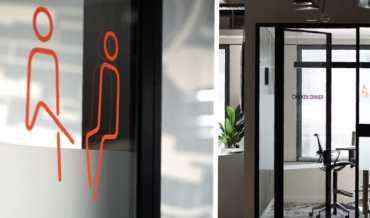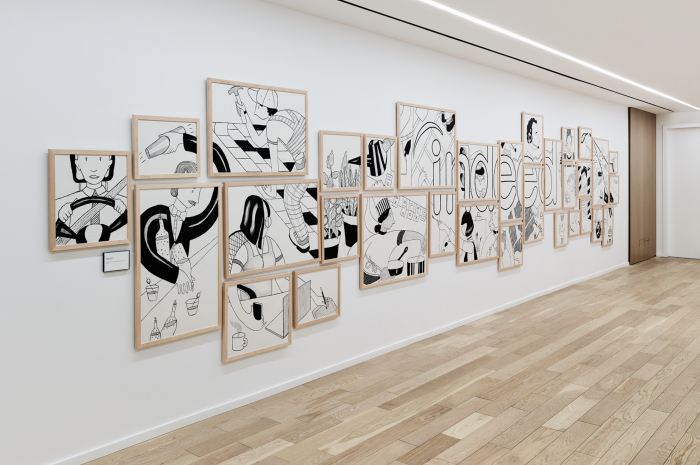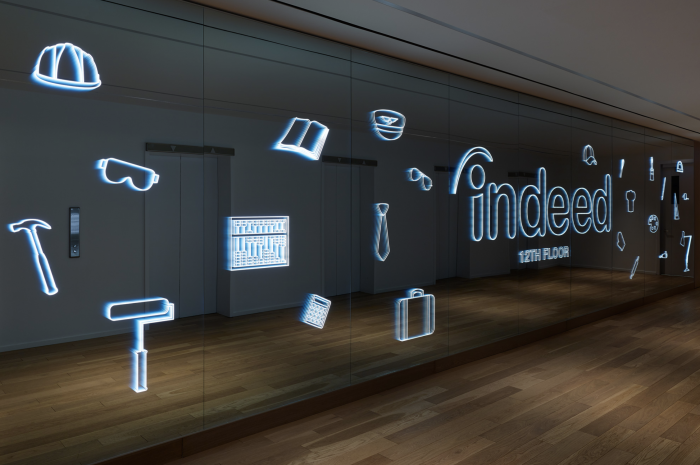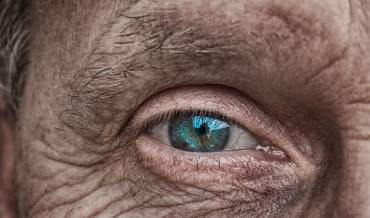
How to Translate Your Brand into a Physical Space?
How to Translate Your Brand into a Physical Space? https://www.visualstorytell.com/wp-content/uploads/2018/08/header_thumb.jpg 370 218 Shlomi Ron Shlomi Ron https://secure.gravatar.com/avatar/995c0cf093380b90c7704fda398c9addf4e5c605afbc92af5c3f01f67d65aa41?s=96&d=mm&r=g- Shlomi Ron
- no comments
Watch our video recording on the
Visual Storytelling Today show:
On the road?
You can also listen to my audio podcast of this episode.
Subscribe to the Visual Storytelling Today podcast on iTunes or Google Play
Here are select highlights from our chat:
In episode #13 of Visual Storytelling Today show, I chat with Abbey Melsheimer and Gustavo Tonelli, owners of Chilipop, a branded environment design company. We talked about what is Branded Environment Design in the context of Visual Storytelling, what are the typical business objectives marketers should consider, the process, pitfalls to watch out for and top tips on how to get started.
SR: How do you define visual storytelling in general and in branded environment design, in particular?
AM: I’d define Visual Storytelling in a literal sense as conveying a message through visuals (graphics, photography, video, built space, experience). And Branded Environment Design within the larger Visual Storytelling space – as a visual 3D immersive experience conveying the values and the culture of the
organization. It can exist in many forms (e.g., paintings, sculptures, fabrics, accessories, sounds and even digital). What is that setting when you get into someone’s office? Or it’s the ambiance you get when visiting a retail space, for example, Publix vs. Trader Joe’s.
GT: Both terms I think mean that the narrative – visually, and in a larger sense experientially – is never an accident, it’s always the result of purpose and intent. Because customers care and they have
choices. And if there’s something that the ‘millenials’ have taught us is that would-be-employees have
choices too. Choices that require brands to connect, to create a stronger, deeper bond that
transcends the noise to make an impression. We design experiences that allow our clients to
connect with their customers, employees, and communities in extraordinary ways.
 Indeed Toronto: chilipop team collaborated with a Toronto-based artist who elevated
Indeed Toronto: chilipop team collaborated with a Toronto-based artist who elevated
our design intent to artistic levels (photo credit: chilipop).
 Indeed Toronto: Chilipop team took custom illustrations inspired by Indeed’s job search engine
Indeed Toronto: Chilipop team took custom illustrations inspired by Indeed’s job search engine
and etched them on a back-lit mirror (photo credit: chilipop).
SR: What are the typical business objectives clients ask for your visual storytelling services?
AM: Businesses typically use Branded Environment Design in their offline spaces in order to achieve these business objectives:
- Internal Communication of specific company values or what the brand stands for or addressing a
company merger, and in this case, communicating an experience to ease the uncertainty of employees, the community, and customers. These visual messages within the space could covey openness and transparency about the new entity. - Cultural Relevance for worldwide organizations that have regional offices. So how can you create a space that can both retain the overarching corporate identity while celebrating the regional culture and making it also relevant to the local community? Help convey a feeling or entice action (exciting, fun, collaborative, interactive, quiet, productive)
- External Communication: Naturally, if you think about a retail space, Branded Environment Design will be concerned more about conveying the brand narrative but also help to create an environment that helps to increase sales.
 Nixon Peabody: Working side by side with architects Perkins+Will NY,
Nixon Peabody: Working side by side with architects Perkins+Will NY,
chilipop team developed signage that embodies the solidity of the legal firm (photo credit: chilipop).
GT: I’d also add that sometimes we hear people say: “oh these Google or Facebook of the world, can afford Branded Environment Design because they’re big.” I would argue that these large worldwide companies maybe became big because they embraced this approach of celebrating local cultural differences early on, and that allowed them to expand and become bigger.
About Abbey & Gustavo
Abbey Melsheimer
Hailing from a small town in Ohio, Abbey studied architectural design in Germany and graphic design in New York – developing an understanding and respect for cultural nuance that took her to large-scale projects in New York, London, Shanghai, and Miami. Her sensibilities for both design and purpose led Abbey to work on a wide array of spaces – from banking behemoths (Chase) to world-leading technology giants (Google) to trendy consumer products (Evian) – on working buildings and installations alike. She worked for industry leading firms such as HLW, MMoser and MKG before opening her own creative studio in Miami.
Gustavo Tonelli
Musician, writer, radio host, photographer, television producer – since an early age Gustavo has been drawn to anything that involved creating something where nothing existed before. With a keen sense of the business aspects of the arts, he promptly found himself across the aisle working for companies such as Time Warner, HBO, and the Cisneros Television Group. Initially involved in the marketing aspects of music releases, he left his native Argentina to move to the US where he works between New York and Miami focusing on both photography and developing new concepts for television and visual arts.
Looking to bring to life your business narrative? Schedule a FREE conversation to learn more about our full-stack visual storytelling services.
Already have questions you want our guest
to address during the show?
Sweet! Tweet your questions using: #myVSI
Shlomi Ron
Shlomi Ron is the founder and CEO of the Visual Storytelling Institute, a Miami-based think tank with a mission to bring the gospel of visual storytelling from the world of art to more human-centric and purpose-driven marketing. A digital marketing veteran with over 20 years of experience working both on the agency and brand sides for Fortune 100/500 brands such as Nokia, IBM, and American Express. He started VSI to combine his marketing expertise with his passion for visual stories stemming from his interests in classic Italian cinema and managing the estate of video art pioneer, Buky Schwartz. At VSI, he helps brands rise above the communication noise through visual storytelling consulting, training, and thought leadership. Select clients include Estée Lauder, Microsoft, and Cable & Wireless – to name a few. He currently teaches Brand Storytelling at the University of Miami’s Business School. Thought leader and speaker at key marketing conferences. He is also the host of the Visual Storytelling Today podcast, which ranks in the top 10 best business storytelling podcasts on the Web. His book: Total Acuity: Tales with Marketing Morals to Help You Create Richer Visual Brand Stories. Outside work, he is a nascent bread baker, The Moth fan, and longtime fedora wearer likely to jive with his classic Italian cinema interest.
All stories by: Shlomi RonYou might also like
This site uses Akismet to reduce spam. Learn how your comment data is processed.





Leave a Reply